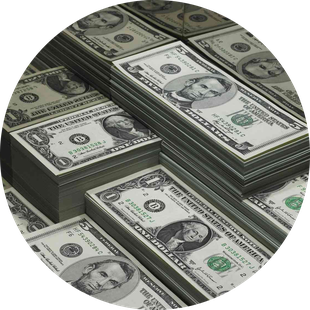4 Investment Strategies to Benefit From a Strong Dollar
A strong US dollar can be a good thing for the American consumer – it makes imported goods like wine, and even traveling abroad, cheaper.
However, if you’re an investor, a strong dollar means you need to reassess your portfolio strategies and rebalance your assets so you get the most out of this situation.
In this article, we’ll look at why the dollar is so strong, how that affects your investment portfolio and a few strong dollar investment strategies. Then we’ll examine how fine wine can help you profit from a rising dollar.
Further reading
- Explore our in-depth guide on The Main Types of Fixed Income Investments, along with their pros and cons.
- Check out some insider tips and tricks on making Long Term Investments.
Why Is the Dollar so Strong?
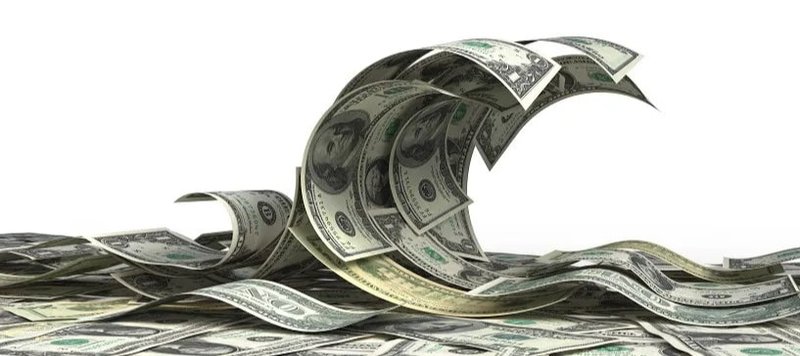
Currency fluctuation is a natural part of the global economy. It results from changes in the monetary policy, inflation, trade balances, and more.
However, the value of the United States dollar has reached its peak (the highest it ever reached in decades) against the British pound, the euro, and the Canadian dollar.
The main reasons for this include:
- The Fed introduced an aggressive monetary policy stance in response to inflationary pressures.
- Investors perceive the dollar as a safe-haven investment when stock and bond markets become volatile.
- The US economy remained relatively stable compared to other economies worldwide. For example, the United Kingdom and other European countries were hit harder by high inflation and slow economic growth (due to energy shortages).
- How the United States government reacts to market conditions also plays a role in improving dollar strength. The US central bank (the Federal Reserve) has focused more on reducing high inflation and interest rate rises than other governments.
How to Identify a Strong Dollar
To determine the dollar strength, you must analyze how a foreign currency compares to the US dollar.
Alternatively, the US Dollar Index (USDX) indicates how the dollar performs against a basket of currencies. USDX contains six currencies – the Euro, Swiss franc, Japanese yen, Canadian dollar, British pound, and Swedish krona.
If the US Dollar Index rises, the US dollar strength increases relative to those currencies. For example, if the index jumps from 50 to 70, it implies the dollar has appreciated by 20%.
The USDX also allows an investor to speculate and hedge currency movements. It trades on the New York Board of Trade but is also available indirectly through ETFs and mutual funds.
How Does a Strong Dollar Affect Your Investment Portfolio?
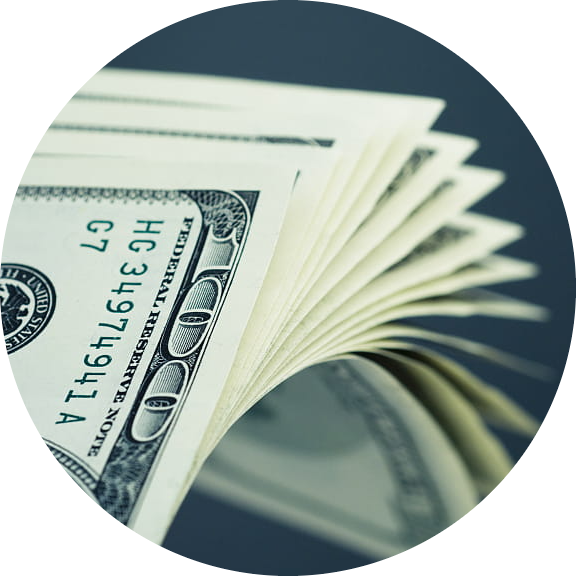
For investors with foreign assets, currency risk is a factor. It refers to changes in one currency relative to another.
Your international exposure determines your level of currency risk and how your portfolio may be affected. So, let’s see how certain assets are affected by the dollar’s strength:
1. Investments in Emerging Markets
These countries are particularly susceptible to a rising dollar. A strong greenback also makes it more challenging for emerging markets to pay their dollar denominated debt.
That’s why mutual funds, fixed income and other assets from emerging market countries are more vulnerable and sensitive to the dollar’s strength. Additionally, emerging market bond funds that issue dollar denominated debt face higher repayment costs, increasing the risk of default.
2. Investments in the Domestic Market
A strong dollar means that multinational US companies earning most of their income from abroad have lower corporate profits. For example, about 40% of the S&P 500’s revenue comes from corporate profits made by foreign-based companies.
So as the dollar rises, the foreign currency income of these companies declines. A rising dollar also means that foreign investors may be less inclined to invest in US assets. Additionally, it can exacerbate the trade deficit by encouraging US consumers to purchase foreign stocks.
Strong Dollar Investment Strategies: 8 Proven Tactics
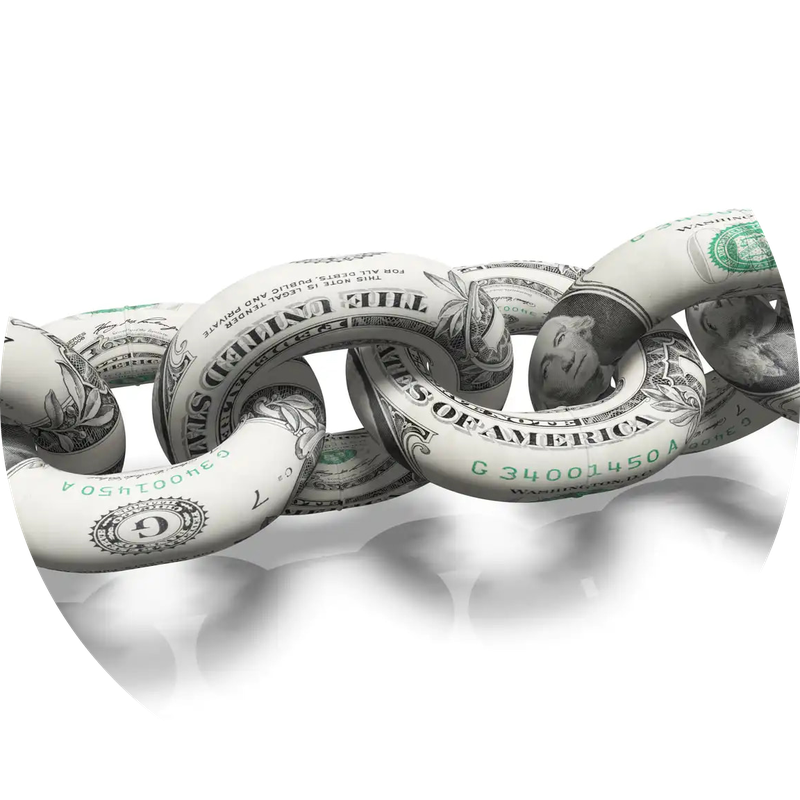
These are some of the strategies you could explore to help you benefit from a rising dollar.
1. Explore Alternative Investments like Fine Wine
The first step should be to modify your investment portfolio.
Traditional investment advice would recommend against making any drastic changes in your portfolio based on short-term market developments.
When the greenback appreciates against other currencies, you need fewer dollars to make international purchases. At the same time, it limits the ability of local wine producers to raise prices, making that bottle of Burgundy more attractive.
Grabbing a few good international vintages while they're slightly more affordable could be a prudent investment, especially considering wine’s tendency to appreciate with time.
For example, in 2022 wine investment delivered an annual return of 20.54% while the S&P 500 was down by 19.44%
2. Adjust US Stocks to Small and Mid-Cap Companies
Large tech companies (like Microsoft and Apple) usually benefit from a weaker dollar. So, it’s best to avoid multinational corporations since the stronger dollar may hit their international branches.
Similarly, commodities tend to perform better during weaker dollar periods, so some investment advice on rebalancing may be beneficial.
To avoid the negative effects, you could diversify your portfolio with small or midcap US company stocks as these companies profit from the domestic market.
3. Invest in More Domestically Focused Sectors
It could also be worth adjusting your portfolio to sectors that are less likely to hold foreign stocks.
For example, utilities and real estate are good options as most of their profits are generated domestically. Manufacturing businesses that receive their raw materials from foreign markets can also benefit from a rising dollar.
Here are three domestically focused funds and stocks that may be worth considering when the US dollar is on the rise:
- iShares Russell 2000 ETF (IWM)
- Vanguard Real Estate (VNQ)
- Invesco PowerShares US Dollar Index Bullish Fund (UUP)
- Lockheed Martin (LMT)
- UnitedHealth Group (UNH)
- EOG Resources (EOG)
4. Consider International Equities
Where a rising dollar may make many US stocks less attractive, investors may find bargains among international equities. Additionally, foreign markets tend to perform well when US stocks are struggling.
The last three months, in particular, have seen US stocks underperform compared to many foreign markets. For example, the Russell 3000 benchmark for the entire US stock market gained a mild 6.3% in the three months between October 24, 2022, and January 24, 2023.
By comparison, the MCSI World ex-US Index soared over 22%.
5. Consider Currency-Hedged Versions of International Stock Indices
You could consider currency hedged versions of international stock indices for any foreign assets in your portfolio. These funds counteract currency fluctuation by trading derivatives.
But keep in mind that while these funds generally outperform the unhedged funds when the dollar is strong, US dollar weakness may cause these funds to underperform.
6. Hedge Currencies - But Leave it to the Professionals
Hedging currencies is an investment approach that involves buying and managing currency contracts like futures or options. It’s a risky strategy, so hedging currencies on your own is generally not recommended. Even some professional fund managers won’t do it, arguing that the costs outweigh the benefits.
However, currency neutral funds could be a moderately safer bet.
For instance, IQ FTSE International Equity Currency Neutral (HXFI) is a semi-hedged ETF. It maintains a 50% (or neutral) currency hedge on its portfolio of international stocks by using derivatives contracts on the underlying currencies. However, the fund lost 10.63% over the last year.
7. Take Advantage of More Affordable Loans to Start a Business
When the dollar strength rises, the interest rate and inflationary pressures tend to remain low, which is ideal for borrowing. It also suggests a stable economy, a crucial factor often cited by business owners.
Further, these conditions are expected to persist. Last year, the former Chairman of the Federal Reserve, Ben Bernanke, stated that he doesn’t expect the federal funds rate (which is currently sitting at 4.58%) to return to its average of 4%.
This results in more affordable loans and allows small businesses to take credit to expand operations and hire additional staff.
8. Purchase Foreign Goods
For the American consumer, rising dollar strength means fewer dollars needed to purchase luxury foreign brands. Clothing brands like Balenciaga and Louis Vuitton, as well as cars like BMW and Mercedes, have become more affordable.
For example, if the price of a car is €80,000 and the exchange rate is 1.5 dollars to the euro, buying that car in the US would cost upwards of $120,000. However, if the exchange rate dropped to 1.2 dollars to the euro, the same car would cost around $96,000.
Now, although a strong US dollar isn’t great news for foreign investors, US investors can benefit by making a few adjustments to their portfolios.
Fine wine is one investment worth considering. Not only can investment-grade French, Italian and other wines become cheaper due to a strong dollar, but the finest bottles have the potential for solid returns.
Fine Wine: An Asset That May Benefit From a Strengthening Dollar
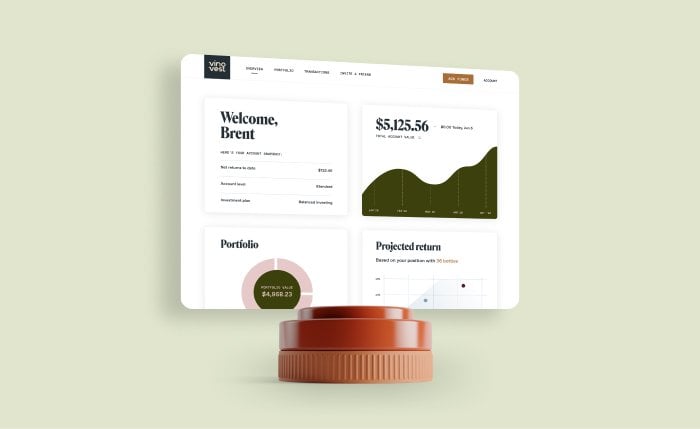
For the wine investor, a rising dollar can bring a lot of benefits. Since a strong greenback makes imports more affordable, purchasing sought-after bottles and vintages becomes more accessible.
If you’d like to add fine wine to your portfolio, look no further than Vinovest. The leading wine investment platform allows you to buy, store, and sell some of the world’s finest wines.
With Vinovest, you don’t need to be a wine expert. The platform handles everything, from researching the vintages, acquiring the bottles, and securely storing and insuring them. What’s more, you can have your bottles delivered if you want to keep them yourself.
Here’s a quick rundown of how to get started:
- Begin by completing a short questionnaire. Your answers here will help Vinovest build a personalized portfolio catered to your investment goals.
- Fund your account. You’ll need a minimum of $1,000.
- Diversify your portfolio with investment-grade wines. Using the answers from the questionnaire, Vinovest’s will recommend wines tailored to your preferred investment style.
- Enjoy a glass of your favorite vino while your portfolio grows.
Sign up with Vinovest today to take advantage of this potentially lucrative asset.
